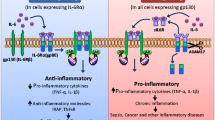Abstract
Esophageal squamous cell carcinoma (ESCC) is one of the most common lethal tumors in the world. Thus, it is very urgent to develop new therapeutic targets against this disease. The mevalonate (MVA) pathway, paced by its rate-limiting enzyme, hydroxymethylglutaryl coenzyme A reductase, is required for the generation of several fundamental end products including cholesterol and isoprenoids. The function of the MVA pathway in ESCC has not been investigated. In this study, it was found that the MVA pathway was upregulated in ESCC clinical samples. Statin, the inhibitor of the MVA pathway, exerted potent cytotoxicity against human ESCC cells by inhibiting cell growth and proliferation, while it exerted lesser effects on non-tumorigenic SHEE cells. Further study revealed that statin could potently induce cell apoptosis and cell cycle arrest and also dose-dependently inhibit the growth of xenograft tumors in nude mice. With regard to the molecular mechanism, statin treatment was related to decreased extracellular signal-regulated kinase activation and proliferating cell nuclear antigen, cyclin D1 expression, and increased cleavage of poly(ADP-ribose) polymerase. Taken together, our findings suggest that the MVA pathway plays an important role in the progression of ESCC by modulating cell growth and statin might be a potential therapeutic agent in ESCC.





Similar content being viewed by others
References
Siegel R. Cancer treatment and survivorship statistics, 2012. CA Cancer J Clin. 2012;62:220–41.
Koshiol J, et al. No role for human papillomavirus in esophageal squamous cell carcinoma in China. Int J Cancer. 2010;127:93–100.
Zhao X, et al. Loss of heterozygosity at 6p21 and HLA class I expression in esophageal squamous cell carcinomas in China. Asian Pac J Cancer Prev. 2011;12:2741–5.
Chen YH, et al. Comparative study of esophageal stent and feeding gastrostomy/jejunostomy for tracheoesophageal fistula caused by esophageal squamous cell carcinoma. PLoS One. 2012;7:e42766.
Goldstein JL, Brown MS. Regulation of the mevalonate pathway. Nature. 1990;343:425–30.
Endo A, et al. The discovery and development of HMG-CoA reductase inhibitors. J Lipid Res. 1992;33:1569–82.
Davidson MH, et al. Safety profiles for the HMG CoA reductase inhibitors: treatment and trust. Drugs. 2001;61:197–206.
Larsson O, et al. HMG-CoA reductase inhibitors: role in normal and malignant cells. Crit Rev Oncol Hematol. 1996;22:197–212.
Mo H, Elson CE. Studies of the isoprenoid-mediated inhibition of mevalonate synthesis applied to cancer chemotherapy and chemoprevention. Exp Biol Med. 2004;229:567–85.
Duncan RE, El-Sohemy A, Archer MC. Mevalonate promotes the growth of tumors derived from human cancer cells in vivo and stimulates proliferation in vitro with enhanced cyclin-dependent kinase-2 activity. J Biol Chem. 2004;279:33079–84.
Cauley JA, et al. Statin use and breast cancer: prospective results from the Women’s Health Initiative. J Natl Cancer Inst. 2006;98:700–7.
Kumar AS, et al. Estrogen receptor-negative breast cancer is less likely to arise among lipophilic statin users. Cancer Epidemiol Biomarkers Prev. 2008;17:1028–33.
Kochhar R, Khurana V, Bejjanki H, Caldito G, Fort C. Statins reduce breast cancer risk: a case control study in US female veterans. J Clin Oncol. 2005;23:514.
Kwan ML, Habel LA, Flick ED, Quesenberry CP, Caan B. Post-diagnosis statin use and breast cancer recurrence in a prospective cohort study of early stage breast cancer survivors. Breast Cancer Res Treat. 2008;109:573–9.
Solomon KR, Freeman MR. Do the cholesterol-lowering properties of statins affect cancer risk? Trends Endocrinol Metab. 2008;19:113–21.
Karp I, Behlouli H, Lelorier J, Pilote L. Statins and cancer risk. Am J Med. 2008;121:302–9.
Lipkin SM, et al. Genetic variation in 3-hydroxy-3-methylglutaryl CoA reductase modifies the chemopreventive activity of statins for colorectal cancer. Cancer Prev Res. 2010;3:597–603.
Kantor ED, et al. Use of statin medications and risk of esophageal adenocarcinoma in persons with Barrett's esophagus. Cancer Epidemiol Biomarkers Prev. 2012;21:456–61.
Mohammed A, et al. Atorvastatin delays progression of pancreatic lesions to carcinoma by regulating PI3/AKT signaling in p48(Cre/+) LSL-Kras(G12D/+) mice. Int J Cancer. 2012;131:1951–62.
James W, et al. Dysregulation of the mevalonate pathway promotes transformation. Proc Natl Acad Sci U S A. 2010;107:15051–6.
Pallottini V, et al. Regulation of HMG-CoA reductase expression by hypoxia. J Cell Biochem. 2008;104:701–9.
Demierre MF, Higgins PD, Gruber SB, et al. Statins and cancer prevention. Nat Rev Cancer. 2005;5:930–42.
Graaf MR, Richel DJ, van Noorden CJ, et al. Effects of statins and farnesyltransferase inhibitors on the development and progression of cancer. Cancer Treat Rev. 2004;30:609–41.
Vincent L, Chen W, Hong L, et al. Inhibition of endothelial cell migration by cerivastatin, an HMG-CoA reductase inhibitor: contribution to its anti-angiogenic effect. FEBS Lett. 2001;495:159–66.
Conflicts of interest
None
Author information
Authors and Affiliations
Corresponding authors
Additional information
Jianxin Shi and Ji Zhu contributed equally to this work.
Rights and permissions
About this article
Cite this article
Shi, J., Zhu, J., Zhao, H. et al. Mevalonate pathway is a therapeutic target in esophageal squamous cell carcinoma. Tumor Biol. 34, 429–435 (2013). https://doi.org/10.1007/s13277-012-0567-0
Received:
Accepted:
Published:
Issue Date:
DOI: https://doi.org/10.1007/s13277-012-0567-0




